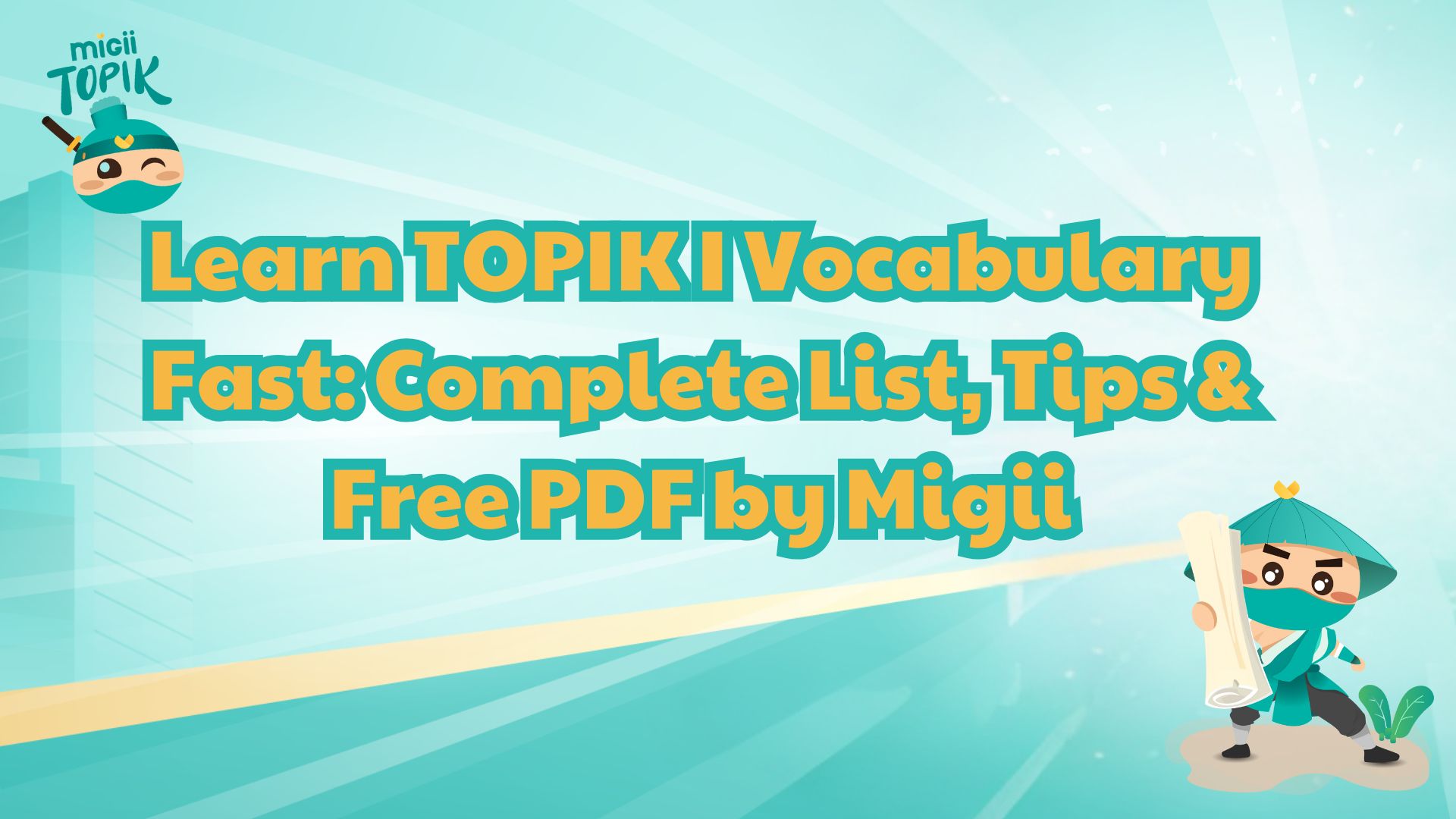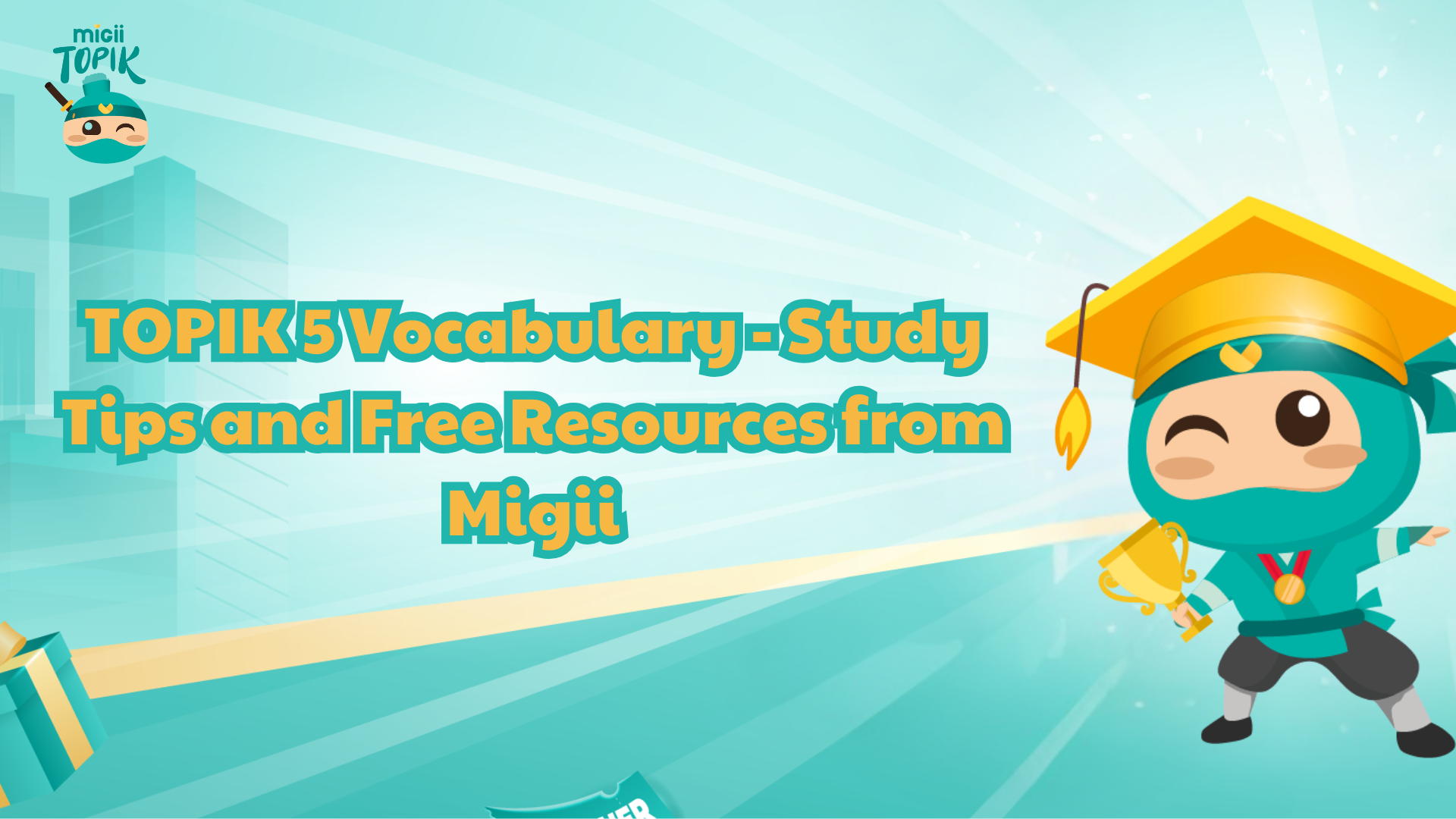TOPIK 1 verbs are the foundation of Korean language learning, covering the most common actions and states used in daily life. These verbs frequently appear in vocabulary, grammar, and reading sections of the TOPIK I exam, making them essential for beginners.
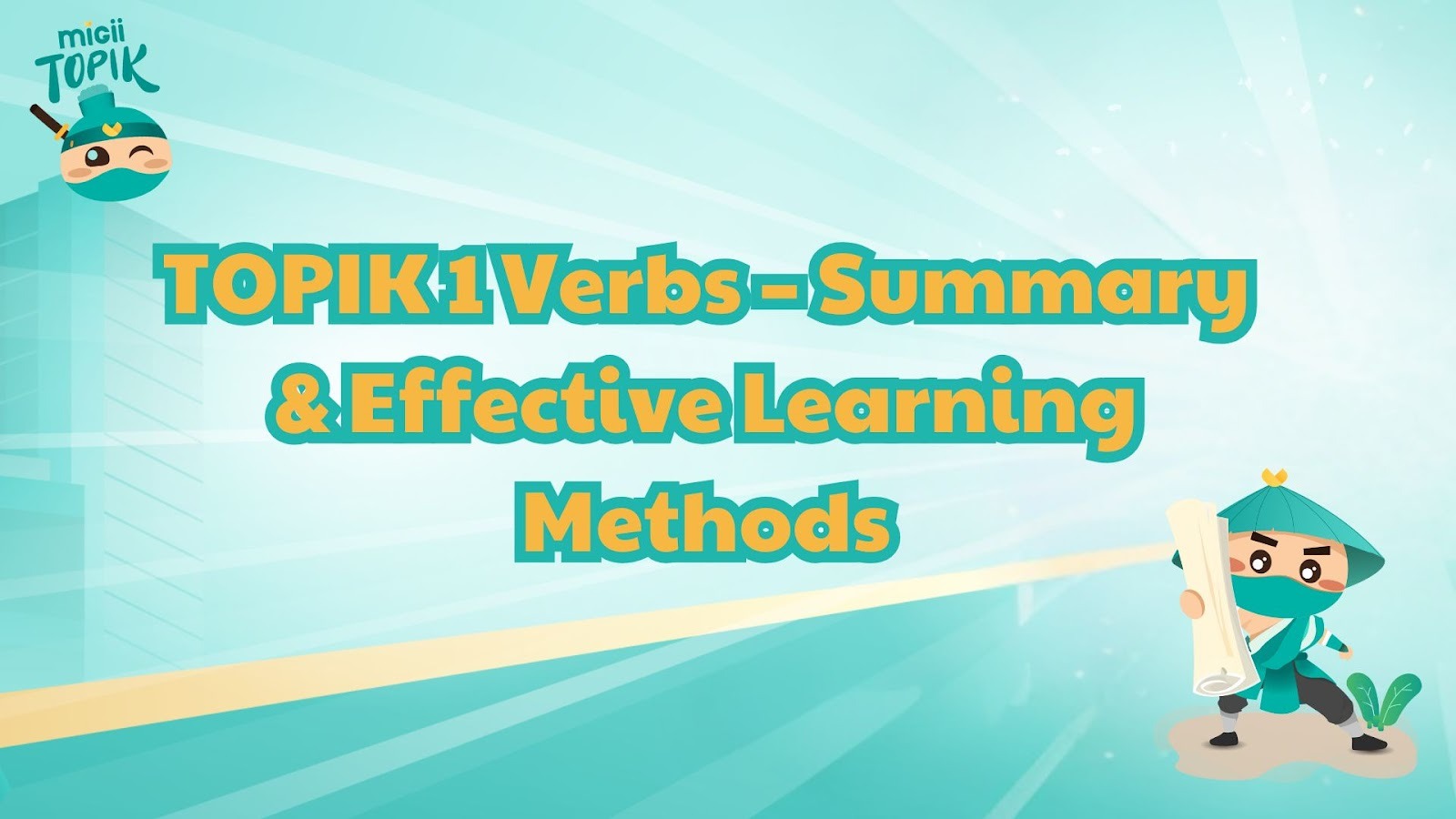
Topik 1 verbs
General Introduction TOPIK 1 Verbs
The TOPIK (Test of Proficiency in Korean) is a standardized exam designed to evaluate the Korean language ability of non-native speakers who wish to study, work, or live in Korea. The test is divided into two main levels: TOPIK I (Beginner) and TOPIK II (Intermediate to Advanced). TOPIK I focuses on assessing basic communication skills through two sections — Reading and Listening — helping learners prove their ability to understand and use simple Korean in everyday life.
Among all parts of the Korean language, verbs play a central grammatical role. They are essential for expressing actions, feelings, and states of being — forming the backbone of Korean sentence structure. In the TOPIK 1 exam, verbs appear in almost every question type, from vocabulary recognition to sentence completion and reading comprehension. Therefore, mastering TOPIK 1 verbs not only strengthens your grammar foundation but also boosts your confidence when understanding and responding in Korean.
Overview of verbs in TOPIK 1
In the TOPIK 1 exam, verbs play a vital role and appear throughout all sections — including vocabulary, grammar, reading, and listening. To perform well, learners should familiarize themselves with about 100–150 basic verbs, which represent the most common actions, emotions, and states used in daily Korean communication.
Key features of TOPIK 1 verbs:
- Quantity & range: Approximately 100–150 basic verbs frequently used in everyday life.
- Typical endings: Most verbs end with –하다, –다, –가다, or –오다, making them easy to identify.
- Meaning types: Verbs express actions, states, or changes, such as:
- 가다 (to go)
- 보다 (to see)
- 있다 (to have)
- 되다 (to become)
Role of verbs in the TOPIK 1 exam:
- Appear in multiple parts of the test — vocabulary, grammar, reading, and listening.
- Act as the key to understanding sentence context and selecting the correct answers.
- Help learners form basic Korean sentences naturally and improve communication fluency.
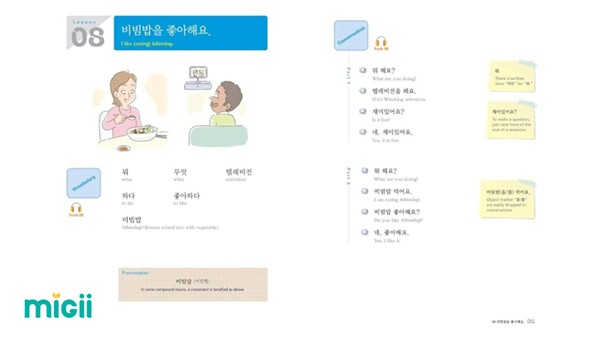
Role of verbs in the TOPIK 1 exam
Mastering TOPIK 1 verbs is not just about memorization — it’s about recognizing patterns, understanding meanings, and applying them effectively in real communication and test situations.
Classify common verb groups in TOPIK 1
Action verb group (동작동사)
In Korean, action verbs (동작동사) are used to describe activities or movements performed by the subject. These verbs express physical or mental actions such as going, coming, eating, or seeing — and they are among the most frequently used words in daily communication. For TOPIK 1 learners, mastering this group is essential because they appear in almost every conversation and test section, from listening to reading comprehension.
Action verbs are easy to identify because they often represent clear, observable actions. Learners should focus on understanding both their base form (dictionary form) and conjugated forms used in polite speech (–아요/어요 endings). Practicing them through simple daily sentences helps improve fluency and grammar naturally.
Below is a table of some common action verbs in TOPIK 1:
|
Korean Verb |
Romanization |
Meaning (English) |
Example Sentence |
|
가다 |
gada |
to go |
학교에 가요. → I go to school. |
|
오다 |
oda |
to come |
친구가 와요. → A friend comes. |
|
보다 |
boda |
to see / to watch |
영화를 봐요. → I watch a movie. |
|
먹다 |
meokda |
to eat |
밥을 먹어요. → I eat rice. |
|
마시다 |
masida |
to drink |
물을 마셔요. → I drink water. |
Try creating your own short sentences with these verbs every day. Repetition and usage in context will help you remember them longer and use them naturally during the TOPIK 1 exam or in real-life conversations.
Static verb group (상태동사)
The state verb group (상태동사) in Korean is used to describe a condition, existence, or mental state rather than an action. These verbs do not show movement or change but instead express how something is or feels. In the TOPIK 1 exam, state verbs are very common and essential for building basic sentences related to possession, knowledge, and emotion.
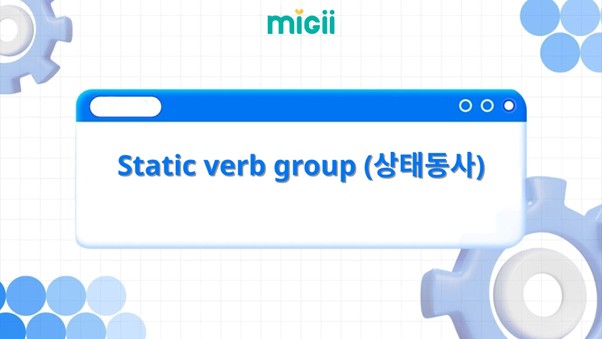
Static verb group (상태동사)
Key characteristics of state verbs:
- Function: Describe status, existence, or feeling, not actions.
- Usage: Commonly used in daily communication to talk about what someone has, knows, or feels.
- Grammar tip: State verbs can also appear with polite endings like –이에요/예요 or –어요/아요, depending on the formality level.
Examples of common state verbs in TOPIK 1:
|
Korean Verb |
Romanization |
Meaning (English) |
Example Sentence |
|
있다 |
itda |
to have / to exist |
친구가 있어요. → I have a friend. |
|
없다 |
eopda |
to not have / not exist |
돈이 없어요. → I don’t have money. |
|
알다 |
alda |
to know |
한국어를 알아요. → I know Korean. |
|
모르다 |
moreuda |
to not know |
길을 몰라요. → I don’t know the way. |
Tip: These verbs often appear in short, simple sentences in the TOPIK 1 reading and listening sections. Practice using them with basic subjects and objects (like 책이 있다 or 시간이 없다) to improve both understanding and fluency.
State Verb Group (상태동사)
The state verb group (상태동사) in Korean refers to verbs that describe a condition, existence, or state of being rather than an action. These verbs help express how something is, exists, or feels, making them very common in both daily conversations and the TOPIK 1 exam. Unlike action verbs that show movement, state verbs remain static and describe ongoing situations.
In TOPIK 1, learners will encounter state verbs in all parts of the test — especially in vocabulary, grammar, and reading comprehension. They are used to talk about possession, knowledge, or the presence or absence of something. For instance, when saying “I have a book” or “I don’t know,” Korean learners rely on this verb group to form accurate and natural sentences.
Some of the most frequent state verbs include 있다 (to have / to exist), 없다 (to not have / not exist), 알다 (to know), and 모르다 (to not know). These are essential for expressing simple but meaningful ideas, such as 친구가 있어요 (I have a friend) or 시간이 없어요 (I don’t have time). Because they are so commonly used, mastering them will greatly improve both comprehension and fluency.
How to memorize and learn TOPIK 1 verbs effectively
TOPIK 1 Verbs – Thematic Learning for Better Memorization
If you’re preparing for TOPIK 1 and looking for a practical resource to study verbs, the “TOPIK Vocabulary in Use” PDF is an excellent choice. This book provides a comprehensive list of basic and high-frequency verbs that often appear in the TOPIK exam, organized by themes to help learners study more effectively and remember vocabulary naturally.
You can learn verbs by topic:
- Food & Eating: 먹다 (to eat), 마시다 (to drink), 요리하다 (to cook)
- Study: 공부하다 (to study), 쓰다 (to write), 읽다 (to read), 외우다 (to memorize)
- Emotions: 좋아하다 (to like), 싫어하다 (to dislike), 걱정하다 (to worry)
- Daily Life: 자다 (to sleep), 일어나다 (to wake up), 청소하다 (to clean)
The book also clearly distinguishes between action verbs (동작동사) and state verbs (상태동사) such as 있다 (to have), 없다 (to not have), 알다 (to know), and 모르다 (to not know), making it easier to understand how each verb functions in different contexts.
Here are Hot TOPIK II Reading download links
Using Flashcards and Apps for Effective TOPIK 1 Verb Learning
One of the most effective ways to memorize TOPIK 1 verbs is by using digital flashcards or learning apps such as Quizlet, Anki, or Migii. These tools allow learners to study actively instead of passively reading through long word lists. Each flashcard presents a verb, its meaning, pronunciation, and example sentence, helping to build both recognition and usage skills.
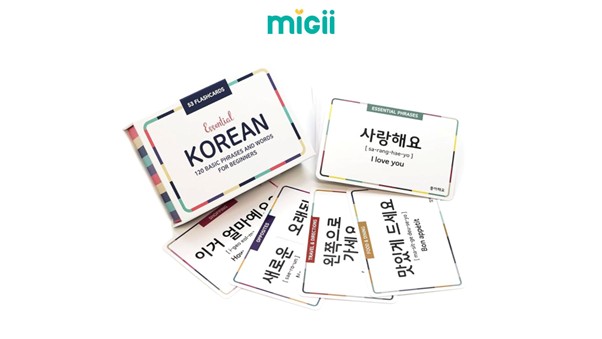
Using Flashcards and Apps for Effective TOPIK 1 Verb
Apps like Anki use a spaced repetition system (SRS), meaning verbs you struggle with will appear more frequently, while the ones you already know will show up less often. This method strengthens long-term memory and prevents forgetting over time. Meanwhile, Quizlet and Migii provide interactive exercises, games, and quizzes that make studying more engaging and less monotonous.
By reviewing verbs regularly using flashcards, learners can improve recall speed, strengthen grammar understanding, and feel more confident when encountering these verbs in reading, listening, or speaking sections of the TOPIK 1 exam.
Practice with Example Sentences – Learning TOPIK 1 Verbs in Context
Another highly effective method to master TOPIK 1 verbs is by practicing with example sentences. Instead of memorizing verbs in isolation, learners should connect each verb to a real situation or daily activity. This approach helps you understand how verbs function in context and improves both your grammar and speaking ability.
For example:
- 가다 (to go) → 학교에 가요. (“I go to school.”)
- 먹다 (to eat) → 밥을 먹어요. (“I eat rice.”)
- 보다 (to see/watch) → 영화를 봐요. (“I watch a movie.”)
- 자다 (to sleep) → 일찍 자요. (“I sleep early.”)
By repeating and creating your own example sentences, you can naturally remember the verb forms, particles, and sentence structure. Practicing in this way turns memorization into active language use, which is key to performing well on the TOPIK 1 exam and communicating confidently in Korean daily life.
Common Verbs in TOPIK 1 – Summary List
Below is a summary of the most frequently used verbs in TOPIK 1, organized by topic. These are essential for mastering basic Korean communication and appear regularly in the TOPIK I exam.
|
Topic |
Common Verbs |
Meaning (English) |
|
Daily Life |
가다 · 오다 · 자다 · 일어나다 · 씻다 |
to go · to come · to sleep · to wake up · to wash |
|
Food & Eating |
먹다 · 마시다 · 요리하다 |
to eat · to drink · to cook |
|
Study & Work |
공부하다 · 읽다 · 쓰다 · 배우다 |
to study · to read · to write · to learn |
|
Communication |
말하다 · 듣다 · 대답하다 · 전화하다 |
to speak · to listen · to answer · to call |
|
Emotions |
좋아하다 · 싫어하다 · 웃다 · 울다 |
to like · to dislike · to laugh · to cry |
These verbs form the foundation of most TOPIK 1 vocabulary and grammar questions. Mastering them through daily practice, flashcards, and example sentences will help you understand and respond naturally in Korean.
Here are Hot 1000 từ Topik download links
Tips for Reviewing Verbs in the TOPIK 1 Exam
When preparing for the TOPIK 1 exam, verbs play a key role across all sections — vocabulary, grammar, and listening. To study them effectively, you can apply several focused strategies:
- Recognize common verb endings such as -아요/어요, 했어요, and -습니다/습니까. These endings help identify verb tenses and politeness levels, which often determine the correct answer in multiple-choice questions.
- Review sentence patterns from beginner textbooks like 세종한국어 1–2 or 한국어 문법 초급 (Basic Korean Grammar). These materials provide real-life examples that show how verbs are used naturally in context.
- Practice with mock tests and mobile apps such as Migii, TOPIK Test, or TOPIK One. Regular exposure to practice questions helps you improve speed, listening comprehension, and confidence during the exam.
By combining grammar awareness with consistent practice, you’ll develop a stronger understanding of how verbs function in sentences. This not only boosts your TOPIK 1 score but also improves your ability to use Korean effectively in everyday life.
Conclusion
Verbs are the foundation of the Korean language and play a vital role in the TOPIK 1 exam, forming the base for developing writing, listening, and speaking skills. To achieve the best results, learners should study consistently — memorizing 5–10 new verbs per day and practicing with example sentences to build natural fluency. For effective learning, you can visit Migii, a trusted online platform for TOPIK preparation, where you’ll find detailed verb lists, grammar lessons, and practice tests to help you strengthen your skills and study more efficiently.



